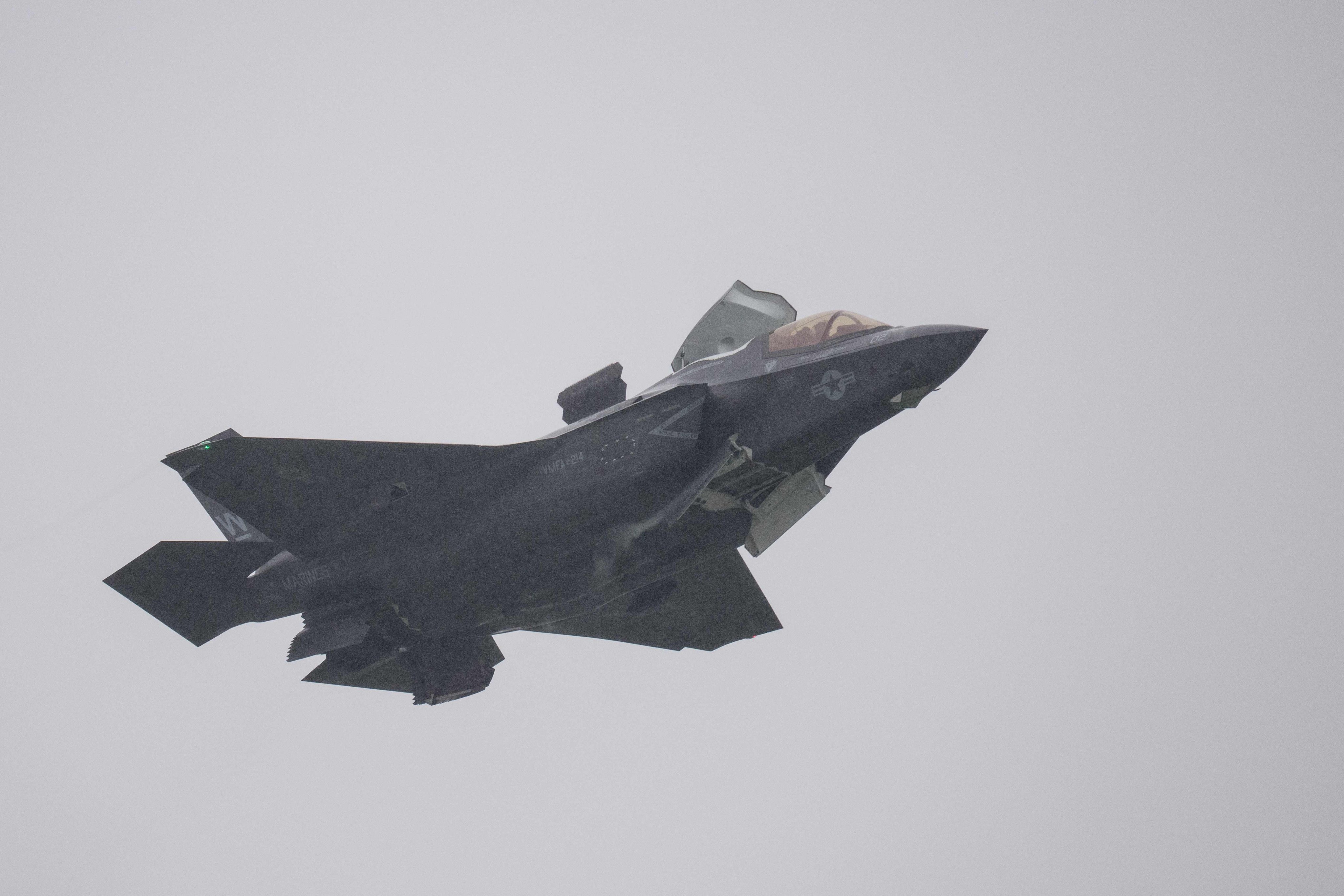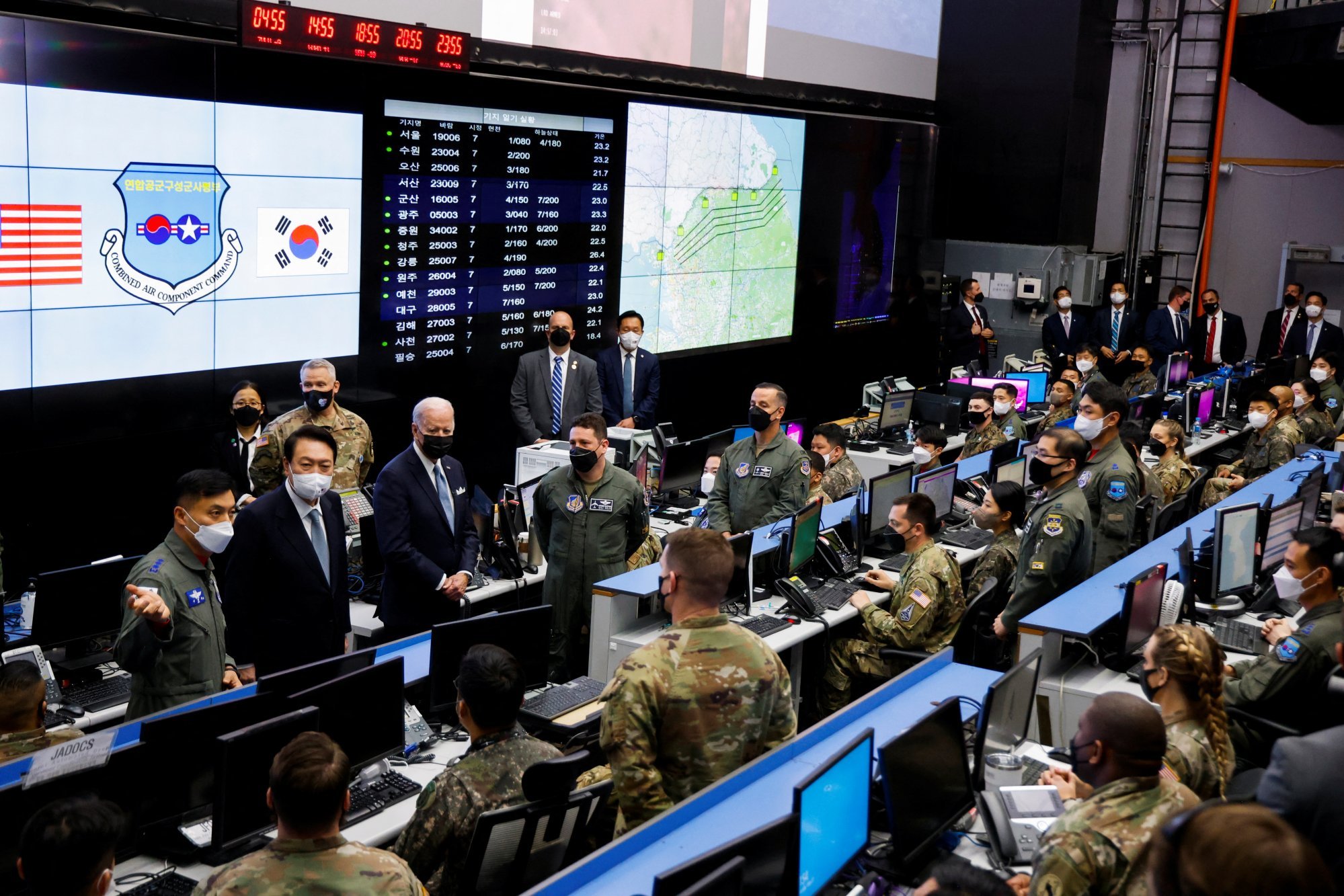Inside South Korea’s secretive air defence hub that aims to scramble jets in 2 minutes
Pilots sprint to their planes seconds after an alert goes out at the Korea Air and Space Operations Centre

South Korea has lifted the veil on a key nerve centre of its air defences, offering a rare look inside the facility tasked with responding to threats from North Korea and beyond in as little as two minutes.
On Wednesday, local media were given access to the Korea Air and Space Operations Center (KAOC), a highly secured command post located within Osan Air Base in Pyeongtaek, about 60km south of Seoul.
From here, South Korean and US forces monitor and coordinate aerial responses across the Korean peninsula – a capability that has become increasingly vital as North Korea advances its missile and nuclear programmes.
The unveiling comes amid growing alarm in Seoul over Pyongyang’s push to develop smaller, tactical nuclear weapons and diversify its delivery platforms. On May 15, North Korea carried out its first publicly acknowledged live-fire test of a medium-range air-to-air missile, fired from a MiG-29 fighter jet during drills attended by leader Kim Jong-un.
South Korean officials are also concerned that the North’s weapons development may be receiving a technological boost from Russia, in exchange for Pyongyang’s reported support for Moscow’s war in Ukraine – a relationship that has triggered fresh unease in Washington and Tokyo.

Meanwhile, South Korea’s air defence identification zone has seen a growing number of incursions by Chinese and Russian military aircraft, adding to the operational strain on KAOC personnel.
The Korea JoongAng Daily reported that tension was palpable within the dimly lit command centre, where troops work under intense pressure.
The centre operates around the clock, monitoring the skies over the entire Korean peninsula and the airspace over the East Sea using fixed and mobile radar. Service members monitor data on various consoles and screens, performing friend-or-foe identification and responses according to a 24-hour schedule with four shifts.
Two of the centre’s components were revealed – the Master Control Reporting Centre (MCRC) and the Korea Air and Missile Defence (KAMD).
At the MCRC, surveillance specialists analyse radar feeds from air, land and sea assets – including early warning aircraft and Aegis-equipped destroyers – to distinguish genuine flight paths from false signals such as birds or weather disturbances.
Shifts at the MCRC can last up to six hours, during which many airmen reportedly do not leave their stations – not even to drink water, according to The Korea Times.
Once an aircraft is detected, an identification team cross-checks it against flight plans and confirms its identity using transponder data, voice communications, and information shared with regional partners. If a track cannot be verified – or if an unauthorised aircraft enters South Korea’s Air Defence Identification Zone – the weapons control team deploys interceptors or activates missile defence systems.
Colonel Park Geun-hyung, head of combat operations, conducted a training simulation at the MCRC on Wednesday.
Eight seconds after an initial order was given by Park, a large screen showed, in real time, pilots and maintenance personnel running toward KF-16 hangars at Korea’s 20th Fighter Wing in Seosan, South Chungcheong.
It took just over two minutes for the pilots to get into their cockpits and complete preparations for take-off. In a real situation, aircraft must be airborne and establish aerial communication within around 10 minutes.
The KAMD oversees missile defence operations. Though not officially confirmed, it has reportedly doubled its operational capabilities, including missile trajectory detection range. South Korea also shares missile information with the United States and Japan as part of their trilateral security cooperation.
The centre aggregates missile trajectory information from American early warning satellites, radar assets of the Air Force’s Space Operations Squadron and Aegis destroyers of the South Korean Navy. The consolidated data is transmitted to missile defence units, which then prepare to deploy Cheongung-II and Patriot missiles to targeted areas.
Depending on the type of missile, the South Korean military estimates that North Korean ballistic missiles could reach the greater Seoul area in as little as three minutes, and Busan in eight minutes.
North Korea has fired more than 200 missiles since 2014, with the majority being close or short-range provocations, according to the South Korean military. The South Korean Air Force operates E-737 airborne early warning and control aircraft, which so far have successfully tracked all North Korean cruise missiles.